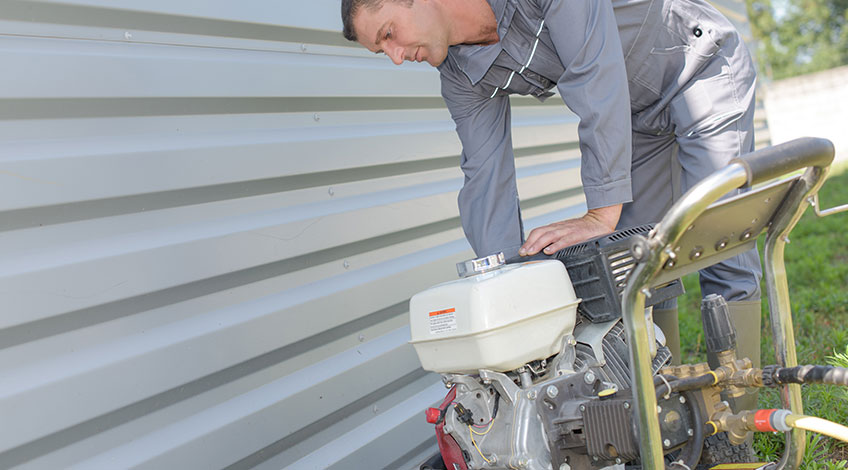
Pressure Washer Maintenance Guide (100% Beginner Friendly)
You’ve finally done it, after weeks of reading reviews on the best pressure washer to buy, you’ve taken the plunge and bought one. Now the fun really begins, in the first few weeks of owning a pressure washer, you’ll wash everything that’s not moving outdoors (and a few things that are too). Then it hits you, that thought that’s been niggling away in the back of your mind, “I have to regularly maintain my new toy”.
It can sound daunting, but it really is much simpler than it sounds. In fact, many of the maintenance tasks are done using just your eyes! But we’ll get to that soon enough, let’s look at why you need to perform regular maintenance routines on your pressure washer. It’s brand new right, so it won’t need anything done to it for ages right?
Wrong, depending on the type of pressure washer you went for, petrol-powered or electric-powered, it will need looking after sooner rather than later. It’s not like your car, most people don’t lift the bonnet on their car from service to service with no problems at all. Pressure washers are designed differently to cars, so let’s jump straight into the pressure washer maintenance guide-written in plain, easy to understand language that you don’t need an engineering degree to follow.
Why Check A Brand New Pressure Washer?
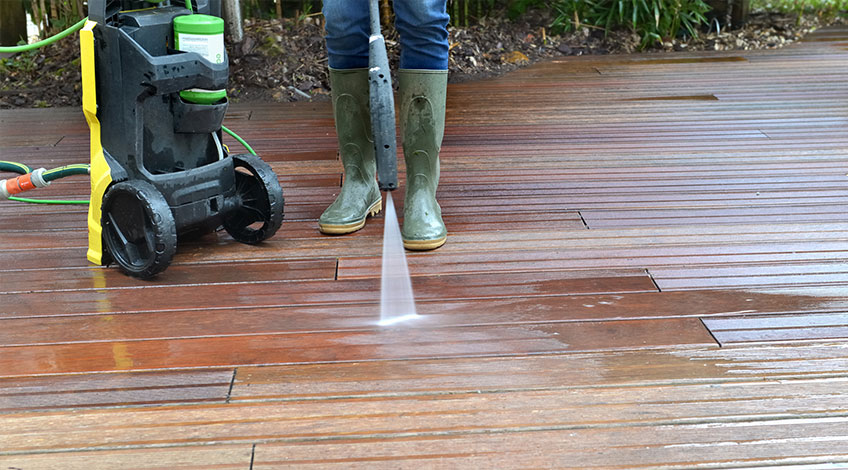
You’re probably thinking something along the lines of “I’ve only used it twice, why does it need checking?” It’s understandable that because it’s new, it doesn’t need anything doing to it. And it probably doesn’t, but it’s good to create the habit of at least checking your pressure washer over before and after every use.
You want it to give you many hours of use without:
- Breaking down – Imagine you have an hour before the guests arrive for an outdoor function, it’s a hot day and you want to clean the patio down and allow time for it to dry before they start arriving. You get your pressure washer out connect it up and nothing-It won’t start, it’s not necessarily the end of the world but it is annoying.
- Causing you problems – How about it starts up, and you get everywhere covered in soapy foam, and the pressure washer packs up on you.
- Save on repair bills – Prevention is better than cure that’s an old saying, and a true one too. Regular maintenance will prevent many parts from breaking down, saving time and money.
Let’s start with gas (or petrol as it’s known in the UK) powered pressure washers first as these have more working parts to go wrong.
Gas-Powered Pressure Washer Maintenance Schedule
Assuming you bought your pressure washer brand new, it will have come with an instruction manual. Somewhere in that manual will be a maintenance schedule, and it probably looks daunting. If you never received a manual or you’ve misplaced it, don’t worry we have it all in hand.
Also, don’t worry it’s nowhere near as daunting as it looks, in fact, the majority of tasks at this early stage in your ownership are observational tasks. That take seconds to perform and you don’t even get your hands dirty. The few hands-on jobs are so simple, they’ll take you all of 5 minutes to perform.
So let’s jump straight in at the first step on the road to happy power washing maintenance.
- Check for leaks – Before you start up your pressure washer, or turn on the water supply, take a quick look underneath the pressure washer, check the fuel lines and the frame of the machine. See any drips or leaks? No, great, if you do wipe them with a cloth and remember to recheck later. If there is a leak it’s probably best to contact the manufacturer.
- Check for water leaks – Connect the hose, and turn on the mains water supply, now inspect for leaks, this is called low pressure. When the pressure washer is in operation and shooting water out that’s called high pressure and you need to check again for water leaks. Again, if you find your machine has a low-pressure water leak or a high-pressure water leak, contact the manufacturer.
- Check the water hose – Check along the water hose for any cracks or splits and for any water leaks too. Remember if the water pipe is twisted or kinked it can cause weak spots in the fabric of the hose. If you do get a weak spot, with 2,000 pounds per square inch (PSI) of pressure it will eventually break through, compromising your power.
- Check the spray gun – Firstly, check the hose connection is tight and free from leaks, and without any damage. Then check the trigger making sure the trigger spring is working properly.
- Check the nozzles – The nozzles should be clean, with no debris blocking the water jet. With a new pressure washer, you should have been supplied with a nozzle tip cleaner just for this function. If not use a straightened paper clip it does the same thing. Push it through the nozzle and once clear flush it through with water to clean it out completely.
- Check the water inlet filter – When you attach the hose to the inlet of the pump check the screen for any build-up of debris, clean if necessary.
Fluid Checks
This all sounds incredibly technical but don’t worry the actual job is much easier than it sounds.
How To Check The Fuel Level On A Pressure Washer
Manufacturers recommend refilling the fuel tank after every use, to prevent air building up that can cause fuel line blockages. On some models, the fuel level is visible just by looking at a gauge but most will have to be opened up to see inside. Just unscrew the fuel cap and have a look inside if you can’t see any fuel, it’s time to top it up.
How To Check The Oil Level On A Pressure Washer
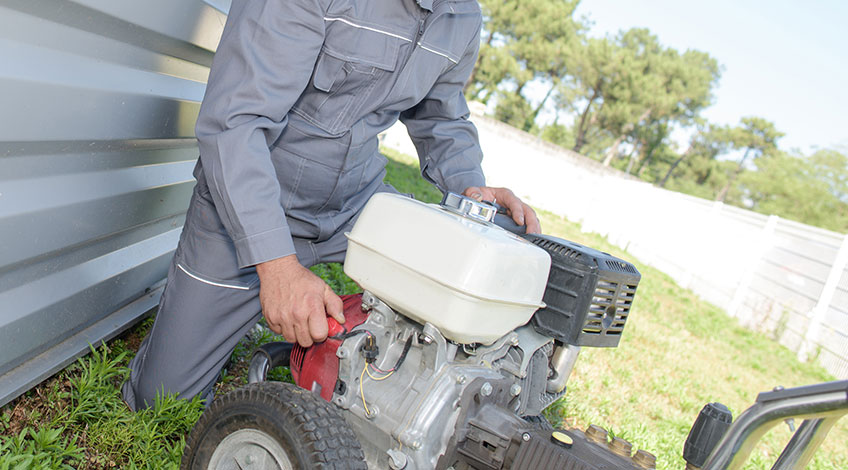
This is done via a dipstick. Similar to the oil dipstick on a car engine, it shows how much oil remains in the engine.
Simply unscrew the plastic cap, the underside of the cap has the dipstick attached. Wipe it clean with a piece of rag, push it back into the tank and remove it to see how far up the dipstick the oil goes, this will let you see if you need to top up the oil before use.
How To Change The Engine Oil On A Pressure Washer
If the oil is in need of changing, this is an easy task to perform yourself. Just remove the oil filler cap (screw), place a container directly below the engine to catch the used oil. Unscrew the drainage bolt (located at the bottom of the engine). Once all the oil is drained out, replace the drainage bolt, making sure not to cross-thread it or overtighten.
Refill with the correct oil check levels and replace the filler cap (screw).
How To Change The Oil In A Pressure Washer Water Pump
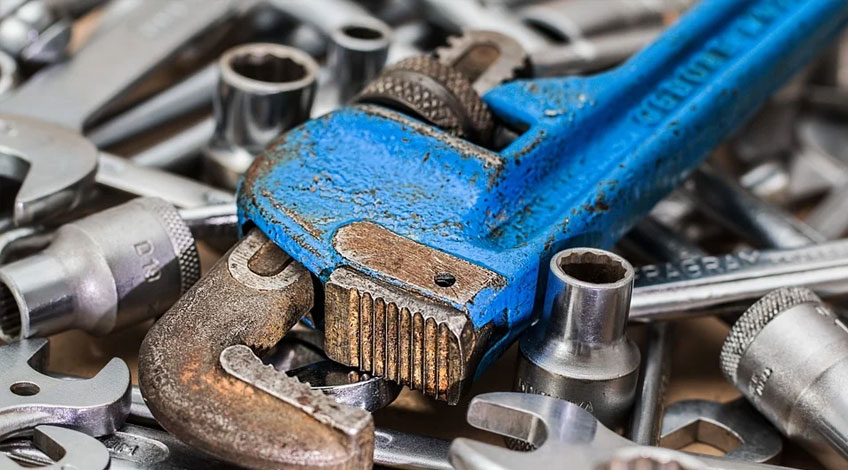
Many pressure washer water pumps are sealed units, this means they cannot be tampered with at all. If your model has a sealed unit you can skip this bit.
Changing the oil in a water pump is much the same as changing the engine oil, just remember to remove the top bolt to allow the oil to flow by reducing the air pressure. You will need special oil for the water pump, it has to be pump oil.
Pump oil has no detergent additives but it does have anti-foam and anti-aeration agents added. It will be called either pump oil or N D oil the N D stands for Non-Detergent. Most good garden centres stock pump oil, but if you can’t find it, you can use classic car engine oil.
Classic cars have no oil filter, oil filters weren’t invented until 1923 so all older vehicles have to use non-detergent oil. The trouble with the classic car oil is it’s expensive when compared to N D oils. For a more detailed set of instructions on pressure washer oil change head over to our why when and how guide by clicking here.
Safe Oil Disposal
Just one last word on engine and pump oil, it is illegal to dump it either down a drain or on wasteland. This is because of the contaminants contained in used oils. Most garages or spares stores have an oil recycling facility where for a few pence you can dispose of your waste oils safely and legally. If not check with your local council as many have oil disposal centres located at recycling facilities.
Exhaust System Maintenance
We’re nearly done now, just a couple more jobs to do and we’ll be finished.
How To Inspect The Spark Arrestor
I know, “the what now?” It’s basically a wire net that prevents sparks from reaching the engine where fuel or oil leakage could ignite causing serious damage to the machine and personal injury. It’s located under the exhaust muffler protector, just remove the protector bolts, then remove the spark arrestor screws.
Just brush the wire spark arrestor with a brush to remove any carbon deposits and reinstall it. If you notice any damage, like holes or breaks in the netting the spark arrestor will need replacing.
Spark Plug Maintenance
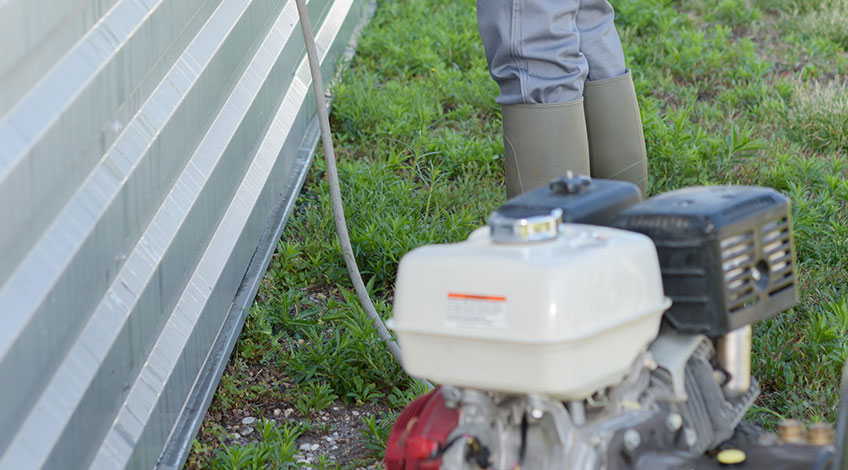
This is a small but vital part of any petrol engine and should be inspected at every service.
How To Maintain The Spark Plug On A Power Washer
Here is a step by step guide on the easy inspection and maintenance of the spark plug.
- Locate and disconnect the spark plug cap.
- Using the correct spark plug spanner, remove the plug from the engine block
- Inspect the plug for any damage or wear, including any cracks in the porcelain, damaged washer, worn or blown electrode
- If the old plug is looking ok, check the sparking gap is correct, to do this you’ll need a feeler gauge and the correct gap listed in the manual.
- Either return the cleaned plug or replace the plug back into the engine block
- Tighten by hand and then tighten up with the plug spanner, be careful not to cross-thread or over tighten the plug.
- Give the spark cap cover a blow to remove any dirt or debris and reconnect onto the top of the plug
- Relax, job done!
Pressure Washer Air Filter Maintenance
The air filter prevents dirt and dust from entering the carburettor and blocking the fuel jets. To prevent any damage to the carburettor, you’ll need to regularly check the air filter and if it’s dirty, give it a clean. More so if you’re pressure washing in particularly dusty areas.
Air filters are easy to clean, just remove the air filter from its case, tap it (gently) against something hard a couple of times to remove any trapped dirt. Over time air filters will deteriorate and need replacing, they are cheap to buy and can be supplied by most car spares shops.
How To Check The Fuel System For A Pressure Washer
Check along the length of the fuel line, look for any cracks or fraying of the pipes. Make sure the connections are secured properly at each end, with no leaks. Make sure there are no cracks or damage to the fuel tank.
How To Safely Store You Power Washer Over Winter
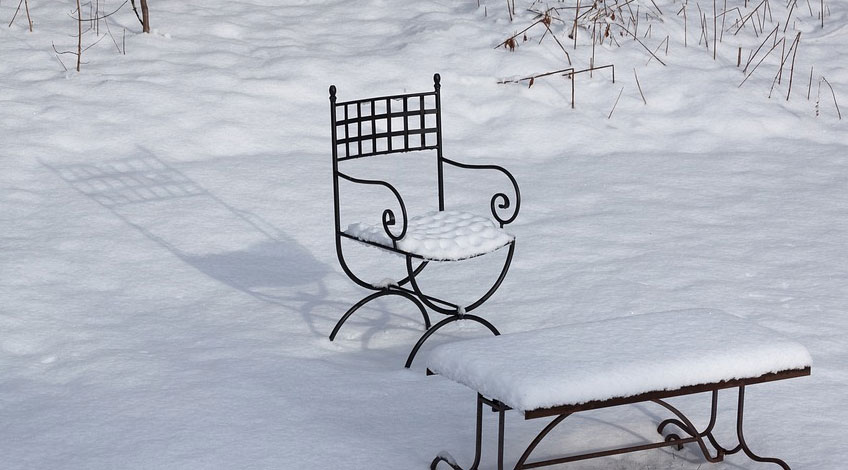
After the last use at the end of the season, it’s time to think about protecting your pressure washer over the long winter months. This is when most fuel-powered pressure washers develop problems, by following these suggestions yours will be as good as new next year, and for many years to come. The first few tips should be done every time you finish using your pressure washer. Commonly known as shut down steps, these tips will help to prevent problems developing in the future.
How To Shut Down A Fuel-Powered Pressure Washer
- If you’ve used detergent, remove the detergent nozzle and replace with either the white or green nozzle. Run water for around 60 seconds to remove any soap suds.
- Turn the engine off, then using the trigger, spray for 10 seconds to run water through the system at low pressure.
- Turn the mains water off and pull the trigger to remove any more water and remaining pressure from the system.
- Remove the pressure hose from the pressure washer and from the spray gun. Roll up the hose allowing any water to drain out as you roll.
- Replace the hose, nozzle and spray gun, in their storage place on the pressure washer.
- Now that everything has been disconnected from the pressure washer, pull the starter string a couple of times to drain the pump of any remaining water.
If you do these simple tasks after every use you will prolong the life of your pressure washer.
How To Protect The Fuel System On A Power Washer For Over Winter Storage
There are 2 ways to protect the fuel system during a long shut down period. Firstly you can remove all of the fuel by unscrewing the filler cap and tipping up the machine until all the fuel is out (store this fuel somewhere safe), once all the fuel has drained run the motor until it cuts out. Once it cuts out, that’s it completely empty of fuel.
The second way is to add a fuel stabiliser to your fuel. This will prevent any degradation of the fuel and also stop any gum or acid build-up forming that could prevent the engine from starting next year. Follow the instructions on the can, but you basically pour the stabiliser into the tank and then run the engine for 10 minutes or so to evenly distribute the stabiliser through the fuel system.
How To Protect The Water Pump On A Pressure Washer Over Winter
Once all the water is removed from the water pump it will still be damp. This dampness will eventually evaporate but it could leave mineral deposits in the pump that can cause problems next year. To prevent this add a pump saver.
Pump savers can be purchased from all good garden centres. To add the pump saver to the pump just, attach the pump saver pipe to the garden hose inlet on the water pump, press the button on the top of the can. Keep an eye on the outlet (where the pressure hose is usually attached to) when you see pump saver coming out of here, the water pump is full.
The pump saver fills the empty pump and coats the seals and pistons from the mineral deposits and also prevents freezing too.
Safe Winter Storage
Think about where you are going to store your pressure washer through the winter. It needs to be somewhere clean and dry, away from any heat sources (like boilers, exhausts from central heating, etc). Think about trip hazards too, allow enough space so you can move around the area if you need to.
Consider buying a decent power washer cover. Although not waterproof, these covers are dustproof and will help to protect your power washer.
Electric-Powered Pressure Washer Maintenance Schedule
Electric-powered pressure washers need much less maintenance than petrol-powered machines, but to ensure the longevity of your machine here are a few tips that will help.
There is no mechanical engine as such, because it is all inside a sealed unit, so no maintenance required. Likewise the water pump is all sealed up too.
So if the motor or the pump do stop working and the troubleshooting guide in your manual doesn’t help, it’s time to replace the pressure washer. So that means so far there’s no maintenance needed, but it’s not that simple!
Electric-Powered Pressure Washer Water System Maintenance
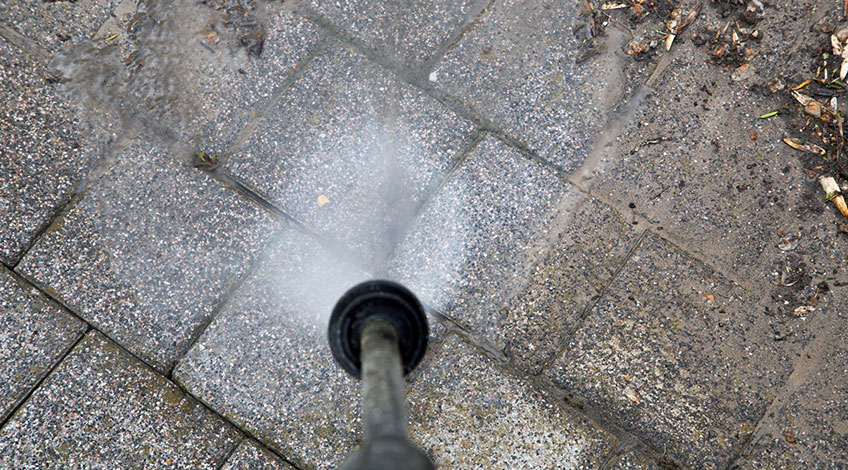
Here’s probably the hardest bit of maintenance you’ll have to do on an electric-powered power washer, I hope you can spare 10 minutes at most every time you use your machine.
Pressure Hose Maintenance On Electric-Powered Pressure Washer
Before and after each use, check the pressure hose for splits, cracks and marks on the hose. If it isn’t causing it to leak now, it might in the future and prevention is always better than cure. Check also the connection joints for any leakage, this is usually just a case of tightening the locking nut slightly, but it could be a washer needs replacing.
Spray Gun Maintenance On Electric-Powered Pressure Washer
Once connected check the connection from the pressure hose to the spray gun make sure there are no leaks. Then pull the trigger a few times to be sure the return spring is working correctly.
Nozzle Maintenance On Electric-Powered Pressure Washer
Over time, the nozzles can become partially blocked with dirt and debris, this will lower the water pressure available for cleaning, and increase the build-up of pressure in the machine. This is potentially quite dangerous and should be checked regularly. Just use the tool provided with your pressure washer, if you don’t have one you can fashion one from a paper clip just straighten one end, this will work just as well as the original tool supplied with your machine.
Just push the tool (or paper clip) into the hole in the nozzle, wiggle it about a bit and then use that nozzle under pressure (but not aiming at where you’re trying to clean). Do this for each nozzle and that’s it maintenance over.
Electric-Powered Pressure Washer Water Pump Winter Care
Just like the petrol-powered pressure washer, the water pump on an electric-powered machine should be completely emptied of water and then filled with a pump saver for long-term storage. This will keep the inner workings of the pump free from damage all winter long.
Extra Tips For Easier Pressure Washer Maintenance
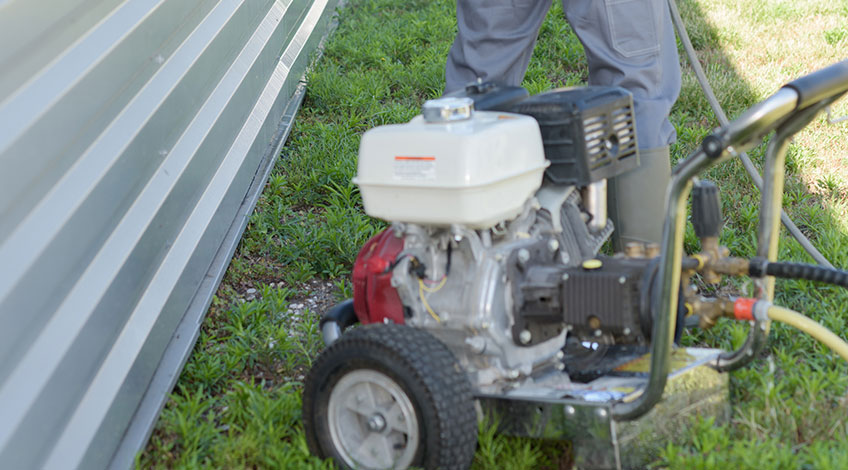
We understand that free time is short and you’re not going to want to waste your time doing stuff you don’t need to, so here are a few extra tips to make your maintenance schedule less of a chore.
Buy A Hour Meter
Hour meters are relatively cheap, you’ll probably be able to pick one up for less than £10 they record how long the engine is running for. So you’ll know exactly when you need to give your petrol-powered pressure washer a service. The cable wraps around the spark plug wire or can be attached to the plug itself.
Use Fuel Stabiliser
For a small price (around £15), you can protect your petrol and fuel system in your pressure washer all winter long. Fuel stabilisers are used mainly on classic cars and boats that spend a long time in storage, making them ideal for winter stored petrol-powered pressure washers.
Use Silicone Grease On Washers
To protect the rubber washers (sometimes called O rings) from corrosion and cracking and leaking, on the pressure hose, water pump and spray gun connectors, apply a thin coating of silicone grease.
Consider Replacing The Fittings
For ease of use and reliability, you’ll want the best fittings on your hose connectors. The ones that are supplied with your pressure washer are not always the best when it comes to quality. Consider replacing them with better quality brass fittings which are much more superior than the plastic connectors often supplied with pressure washers.
Use A Pump Saver
We already mentioned this earlier, but it will give you so much peace of mind knowing that you have protected your water pump through those long winter months. Beneficial to both electric-powered and petrol-powered pressure washers and well worth the £18 or so it will cost you. Or you can make your own, by mixing antifreeze with rapeseed oil, but for the sake of £18, we recommend the pump saver.
Frequently Asked Questions
If your petrol-powered pressure washer keeps stalling it’s probably caused by a clogged carburettor. Probably due to leaving old fuel in the tank for too long. This fuel will become sticky and gum up the jets in the carburettor. Try cleaning the carb with a carburettor cleaner.
Using a pressure washer without water is likely to cause the pump to overheat and possibly break.
If the water flow is restricted to the pressure washer, or if there is either a kink in the pipe or a blockage in the nozzle the pressure washer could pulsate.
Most cheap electric-powered pressure washers use cheap parts, these are only designed to last between 60 – 100 hours. Whereas the more expensive models with better components have a life expectancy of around 500 hours. The average usage rate for a domestic pressure washer is around 50 hours per year.
Winterizing, or preparing your pressure washer for winter storage will protect your machine from frost and mechanical damage.
It is possible for electric-powered pressure washers to overheat, usually through overuse on a hot day.
If you run hot water through an electric pressure washer that’s been designed for cold water use, you will seriously damage the water pump. This will almost certainly void any guarantee.
Also, follow us on Pinterest ...



